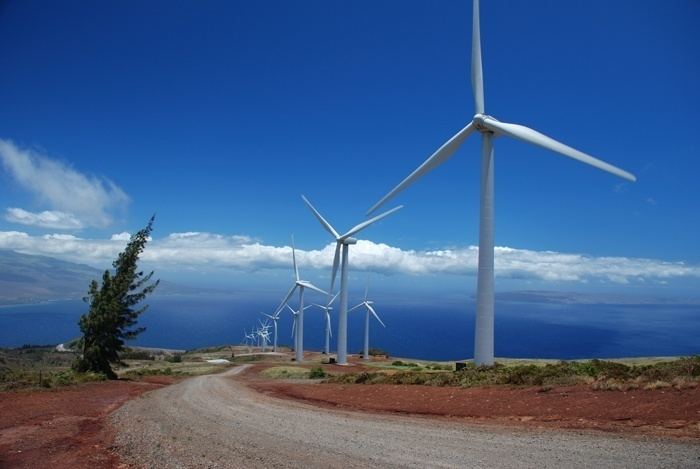Country United States Owner First Wind | Units operational 34 | |
 | ||
Status Operational (I)Operational (II) Construction began October 28, 2005 (I)2011 (II) Commission date June 8, 2006 (I)July 2, 2012 (II) Construction cost $69 million (I)$67 million (II) | ||
First wind kaheawa wind power flv
Kaheawa Wind Power is one of the largest wind farms in Hawaii. It is located on the island of Maui above the town of Maalaea in the West Maui Mountains. Phase one (KWP I) of the project was completed in 2006 by developer and operator First Wind and produces 30 MW from 20 GE Energy 1.5 MW wind turbines.
Contents
Phase two (KWP II), completed in July 2012, built 14 turbines below phase one with an additional 21 MW for a total capacity of 51 MW serving 18,700 homes. Kaheawa is the first wind farm in the United States to use a Habitat Conservation Plan (HCP) to protect the long term health of local species, including three endemic birds and one endemic bat.
Geography
Kaheawa Wind Power is located between the 2000–3000 foot elevation in Kaheawa Pastures in the Lahaina District, on the slopes of the Ukumehame land division (ahupuaʻa) of the West Maui Mountains. The site is bounded by Papalaua Gulch in the west and Manawainui Gulch in the east.
Phase two of the project is located on the Kaheawa Ridge at the 1800–2700 foot elevation, just southeast of KWP I.
Background
The first wind project was proposed in 1996. Zond Pacific installed a series of six anemometers in the area to collect and study wind data. The project was developed by several companies before UPC Wind Partners, LLC and Makani Nui Associates, LLC formed a partnership. An environmental impact statement (EIS) was approved in 1999, followed by a Conservation District Use Application in 2003.
Development
In September 2006, Kaheawa Wind Power began negotiating with the state Board of Land and Natural Resources to expand the wind farm. In February 2011, MECO finalized a power purchasing agreement to buy power from an additional 14 turbines under construction for phase two of the wind farm, which planned to add a new 10 MW battery energy storage system (BESS). The 14 new turbines and battery storage system went online on July 2, 2012.
Habitat
The environmental impact statement for Kaheawa led to the development of a habitat conservation plan (HCP), the first HCP ever used for a wind farm of this scale in the United States. The plan helps fund conservation efforts for four protected species, including three endemic birds and one endemic bat: the Hawaiian goose (nene), the Hawaiian petrel (ʻuaʻu), the Hawaiian shearwater (ʻaʻo), and the Hawaiian hoary bat (ʻopeʻapeʻa). The project is also researching how to best protect the nesting areas of seabirds.
The initial construction of the wind farm required restoration efforts for several plant species in the area. More than 24,000 native plants were eventually restored, comprising species such as Dodonaea viscosa (aʻaliʻi), Metrosideros polymorpha (ʻŌhiʻa lehua), Bidens micrantha (koʻokoʻolau), Wikstroemia oahuensis (ʻakia), and Heteropogon contortus (pili).
The habitat also includes Sida fallax (ʻilima), Sophora chrysophylla (māmane), Lycopodiella cernua (wāwaeʻiole), and two invasive species, Leucaena leucocephala (koa haole) and Cenchrus ciliaris.
In September 2015, SunEdison discovered that the turbines were killing more hoary bats than had been predicted in the initial ecological review. They petitioned the Endangered Species Recovery Committee for permission to increase the number of bats that can die in the lifespan of the turbines from 14 to 80.
